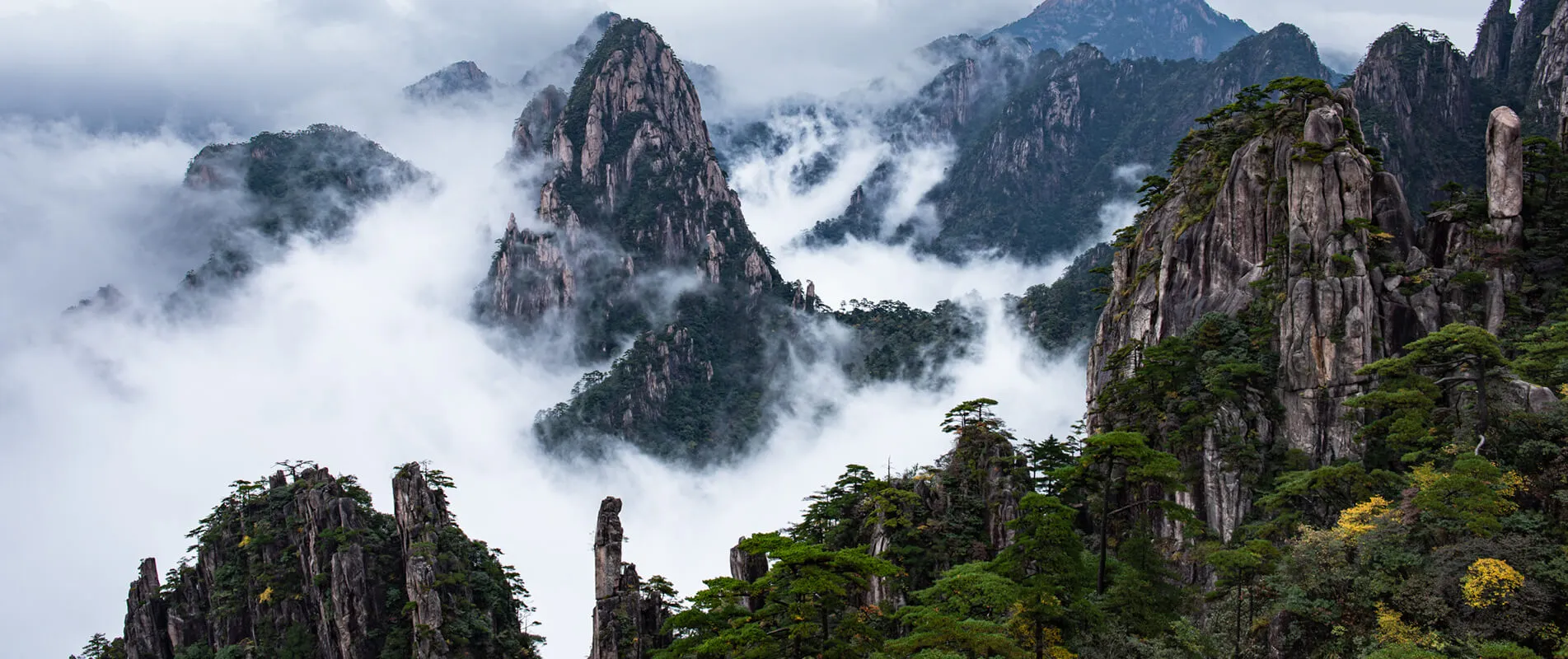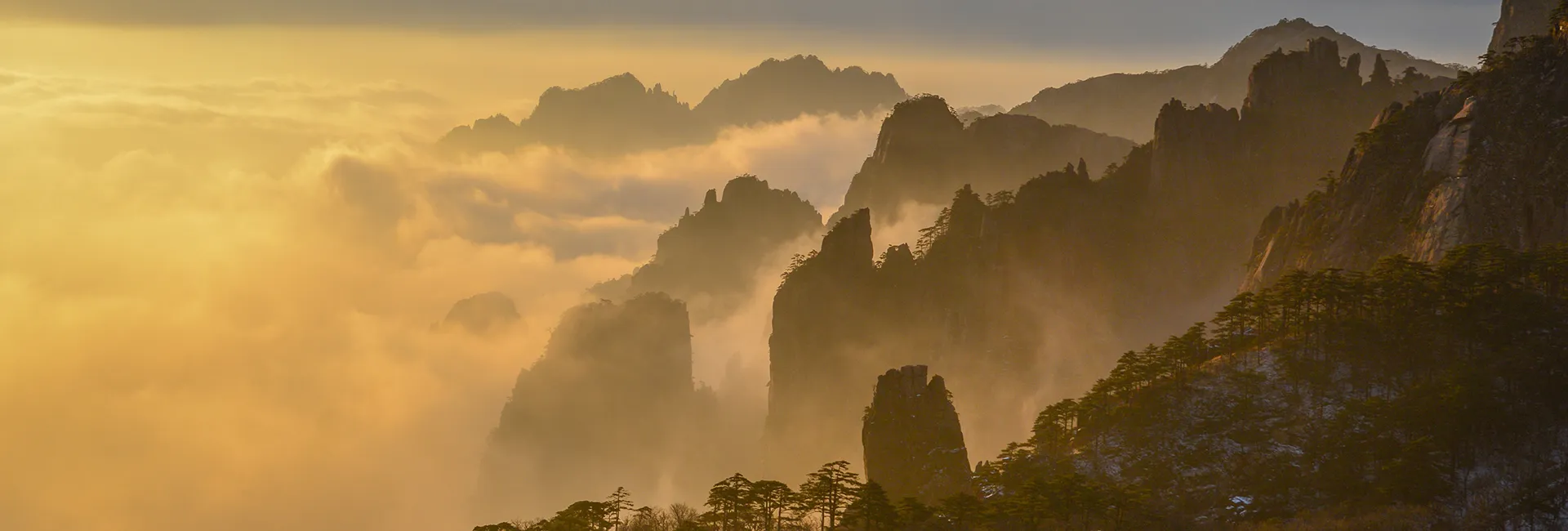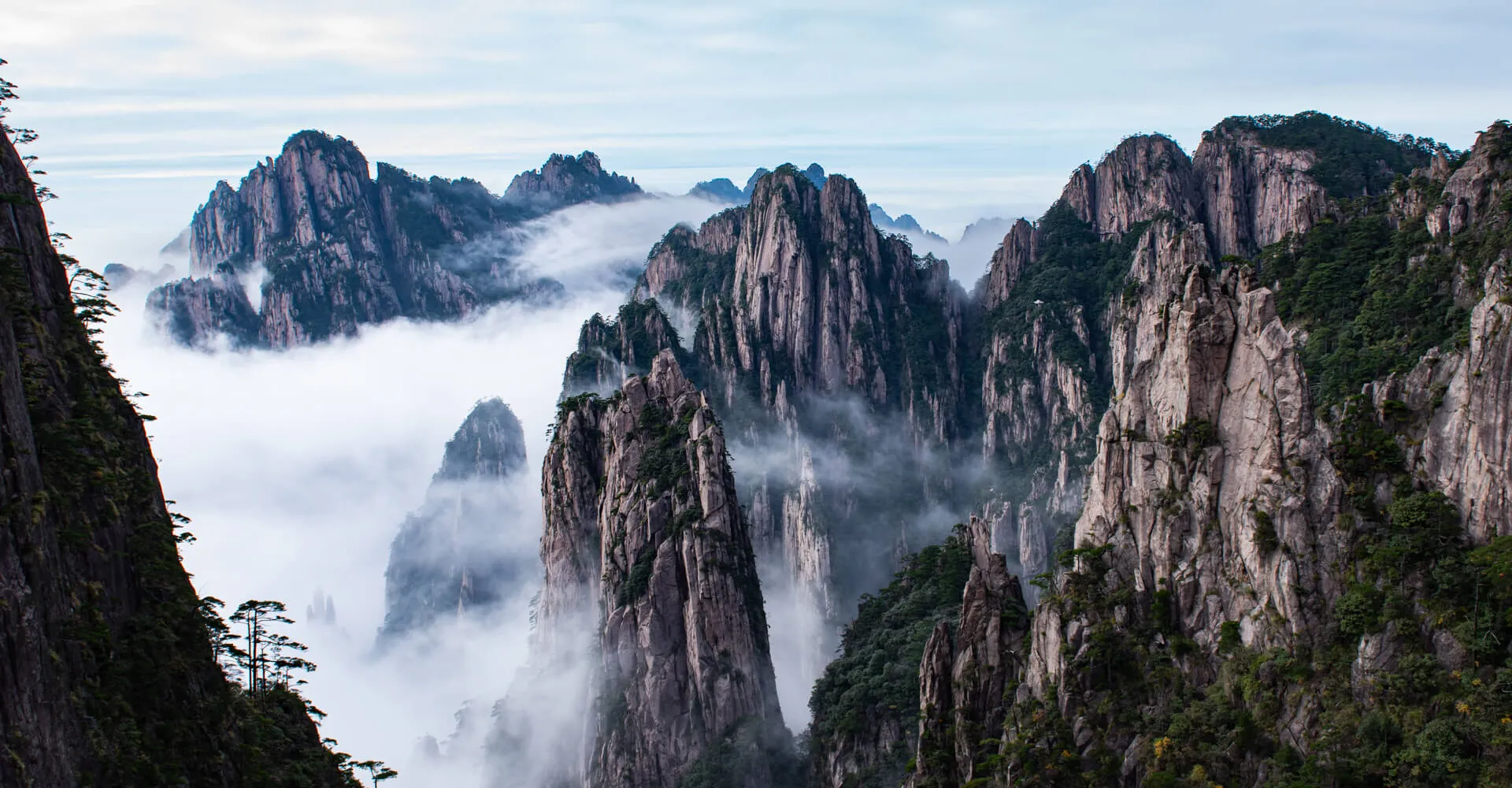Top Things to Know
Best Photography Spots
- Sunrise: Lion Peak, Purple Cloud Peak, Bright Summit
- Sunset: Dispelling Cloud Pavilion
- Sea of Clouds: Jade Screen Pavilion, Refreshing Terrace, White Goose Ridge, Dispelling Cloud Pavilion and Bright Summit
- Mountain Peaks: Lotus Peak (the highest), Celestial Capital Peak (the most dangerous), Bright Summit (the flattest), Begin-to-believe Peak, Lion Peak, Jade Screen Peak, Turtle Peak, Purple Cloud Peak
- Odd-shaped Pines: Welcoming-Guests Pine (east of Jade Screen Peak), Seeing-Guests-Off Pine (close to Jade Screen Peak), Accompanying-Guests Pine (close to Jade Screen Peak), Double Dragon Pine (at West Cloud Sea), Phoenix Pine (Sea Heart Pavilion), Leading Pine (Begin-to-Believe Peak), and Black Tiger Pine
Day Tours Planning
More than 80% of photographers dedicate 2 nights to capture sunrise and sunset photographs at the Yellow Mountains, and one entire day to explore ancient villages. To capture the breathtaking misty rocks and mountain peaks, or the sea of clouds between peaks, it is advisable to stay for a minimum of 3 nights.
- 2 days | one night at the mountains - focus on sunrise and sunset + Hongcun village
- 3 days | 2 nights at the mountains - focus on sunrise and sunset + Xidi and Hongcun villages
- 4 days | 3 nights at the mountains - cover most of the photography sites at the mountains, including Xidi and Hongcun villages and other hidden sites
- 5 days | 4 nights at the mountains - 3 sunrises and 3 sunsets, more opportunities to catch good weather
Drone Photography Policy
Flying drones in the Yellow Mountains scenic area is strictly prohibited. Security guards will scan your bags (without conducting a body check) using an x-ray machine before allowing you to board the cable car. If you are found to be carrying drone equipment, you may be denied access to the cable car.
However, you are free to fly your drone in Hongcun and other ancient villages.
Our Elite Photo Guides
Our photo guides, who were born and raised in Huangshan or its neighboring areas, possess excellent knowledge of the mountain regions and have built strong connections with the locals. They spend over 150 days every year exploring the mountains and ancient villages, enabling them to have an unparalleled understanding of the local weather and culture.
With their vast experience in guiding numerous tourists and photographers, our guides can adjust the itinerary according to the weather and light conditions, ensuring you capture the most incredible shots with optimal lighting.
Practical Travel Tips
Packing - To travel to the Yellow Mountains, it's not advisable to bring suitcases as you will first take a cable car, then hike up hundreds of steps to reach your hotels and photography locations. Therefore, we recommend bringing only essential clothing and your camera bag. If needed, we can arrange to have cloth bags of your luggage delivered to your hotel at an extra cost.
Physical requirements - It's important to note that you will be carrying your own camera bag and tripod every day as photo opportunities may arise anywhere. While some locations only take 10 to 20 minutes to reach, other places such as the West Sea Grand Canyon may require walking for over 2 hours. All locations are connected by well-constructed steps, and it's crucial to wear good-quality hiking boots.
Cameras and lenses - Regarding cameras and lenses, we suggest bringing at least one main body camera. Bringing two cameras is even better, such as the Nikon D810 and D500, one for wide-angle lenses and the other for telephoto lenses. It's recommended to bring a wide/medium zoom covering 24-70 and a telephoto lens covering 70-200. Additionally, bring one spare battery, a shutter release cable, and spare SD/CF cards.







